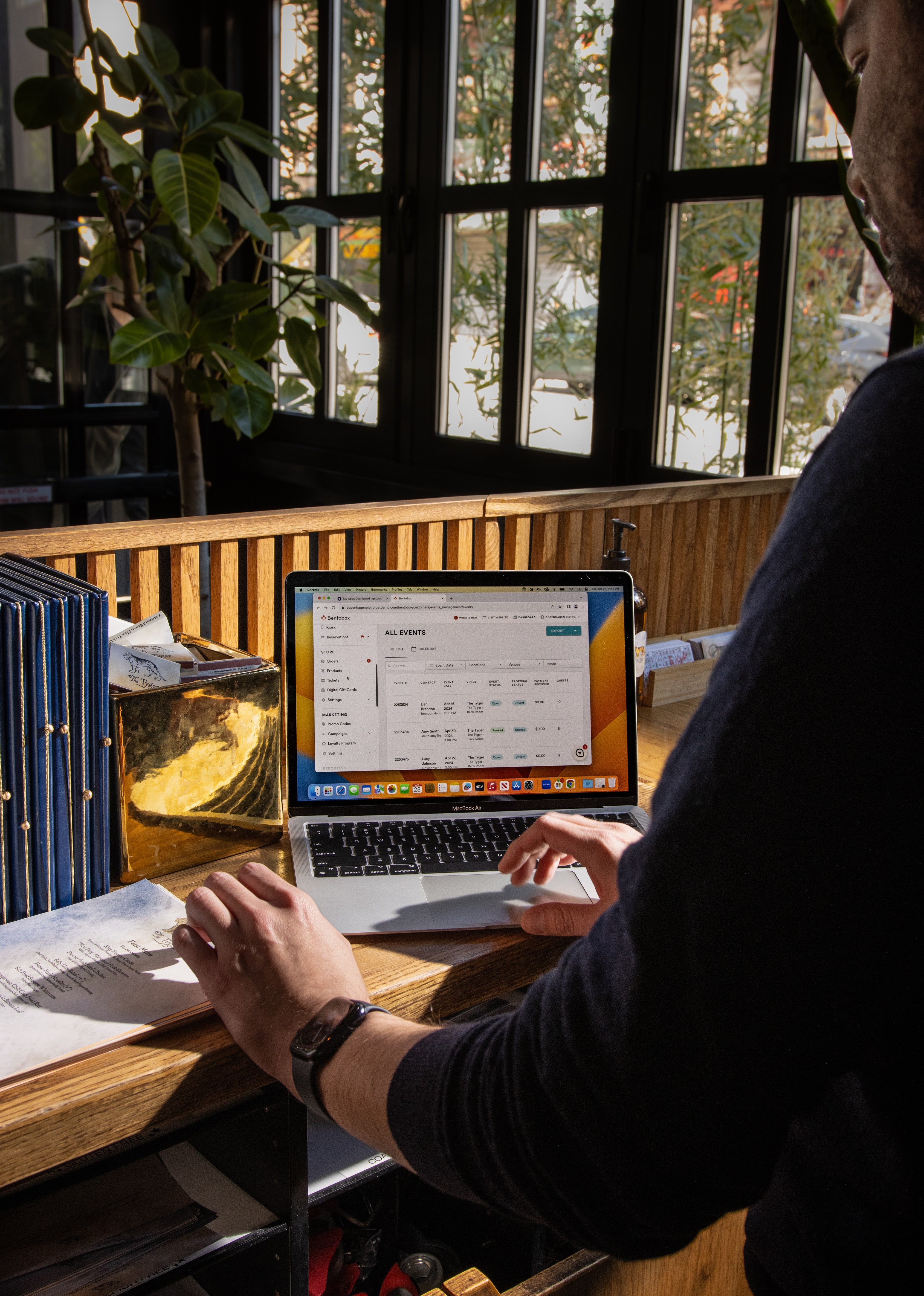Interview
Q&A with Chef Sam Plotnick of Temporis
September 26, 2017
We talk teamwork, tech tools and more
Not many restaurants dream of having co-chefs, but that’s just the way Sam Plotnick and Don Young of Temporis in Chicago like to work. Together, they run this 20 seat, seasonally-focused fine-dining spot, working as equals both in and out of the kitchen. With their small, close-knit staff, Plotnick and Young do up to four seatings a night with an ever-changing, thought-provoking menu. We caught up with Plotnick to talk about how teamwork and tech tools have shaped Temporis.
You and your co-chef Don Young clearly have a strong working relationship. How do you overcome obstacles together?
I always worried that working so closely with someone would be an obstacle, but it’s not. Our communication is key. If one of us doesn't like something, we find a way to make it work. With that collaborative spirit, once you put out a couple of dishes together, you realize you’re better with each other. In the end, you come up with something you’re both happier with than if you had done it on your own.

Photo by Harvey Plotnick.
Temporis opened in January 2017. Nine months down, what have been the biggest surprises?
One of the surprises was with hiring. We’ve ended up hiring people who didn’t necessarily have the right resume but were actually the perfect fit. We arrived at this organically. If you had told me nine months ago that this is how our team would come together I wouldn't have known. So, we now look for people who fit in the most and have the most to contribute. They can grow with the company that way.
Our communication is key. If one of us doesn't like something, we find a way to make it work.
You guys grow hydroponic produce in your restaurant. Can you tell us how you incorporate it into your food?
We’ve designed our tables to be able to grow microgreens in front of the guest. The greens often get trimmed tableside by the server. People seem to really like it. We also started growing strawberries in the basement, and next, we hope to have strawberries growing live at the table, too. This is one of the only ways for customers to physically see how fresh this produce is. Our next goal is to see what we can grow that you are just not going to find in the Midwest in the middle of the winter and make it perfect.

How fresh can you get? At Temporis hydroponic microgreens grow in front of guests and are cut tableside. Photo by Neil John Burger.
We know your menu evolves with the season. How often does it change, and what tools do you use to share those changes with your guests?
We probably change one to two dishes every week or month. We like to use the BentoBox email newsletter platform to announce those changes rather than always updating it on the website. This helps us keep up an air of mystery, but also keeps us in touch with our guests. It’s a great reminder about what we’re doing, directed at people who are already interested in us. It’s been a great advertising tool for us along with social media.

Photo by Harvey Plotnick.
Temporis is a reservations-only restaurant. How has managing reservations online helped your daily operations?
It's great! When you only have four or five people on staff you can’t always have someone on the phone. Having reservations online makes it much easier to manage, and more and more guests don’t want to call. On top of that, all of the servers and employees can see the reservations online, and it helps arm everyone mentally for the upcoming shift. I get push notifications for every reservation that is made, and knowing how many people we have coming helps us be adaptable. Plus, not having a designated person to always be answering reservations on the phone cuts down on costs significantly.
We like to use the BentoBox email newsletter platform to announce menu changes. This helps us keep up an air of mystery, but also keeps us in touch with our guests.
How did you decide on your website design and what information to include?
We wanted our website to be minimalistic and really showcase the food. We also wanted it to just get basics facts across clearly --things that guests need to know before they make a reservation, like our pricing and cancellation policy. BentoBox designed our website for us with those things in mind, so that was great.

Temporis opted for clean and minimal website design to better communicate with their guests.
The overall plug and play functionality of the backend makes it so easy to make updates. It’s just the right amount of control. I’ve tried other website platforms, and you could almost get exactly what you want but there was always some problem or thing that didn’t work out right. They give too much freedom in some areas and not enough control in others. BentoBox has the right blend of things, and the analytics are great, too.
Recommended

Interview
Q&A with Marco Canora of Hearth and Brodo
July 5, 2017
The James Beard Award-winning chef on growth and staying relevant

Community
Behind The Scenes At Gramercy Tavern
May 30, 2017
An inside look at Table128 Bistro+Bar’s experience staging at Gramercy Tavern

Interview
Q&A with Leah Herman of Kindred Co.
February 21, 2017
How to keep restaurant business booming during winter

